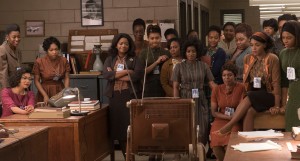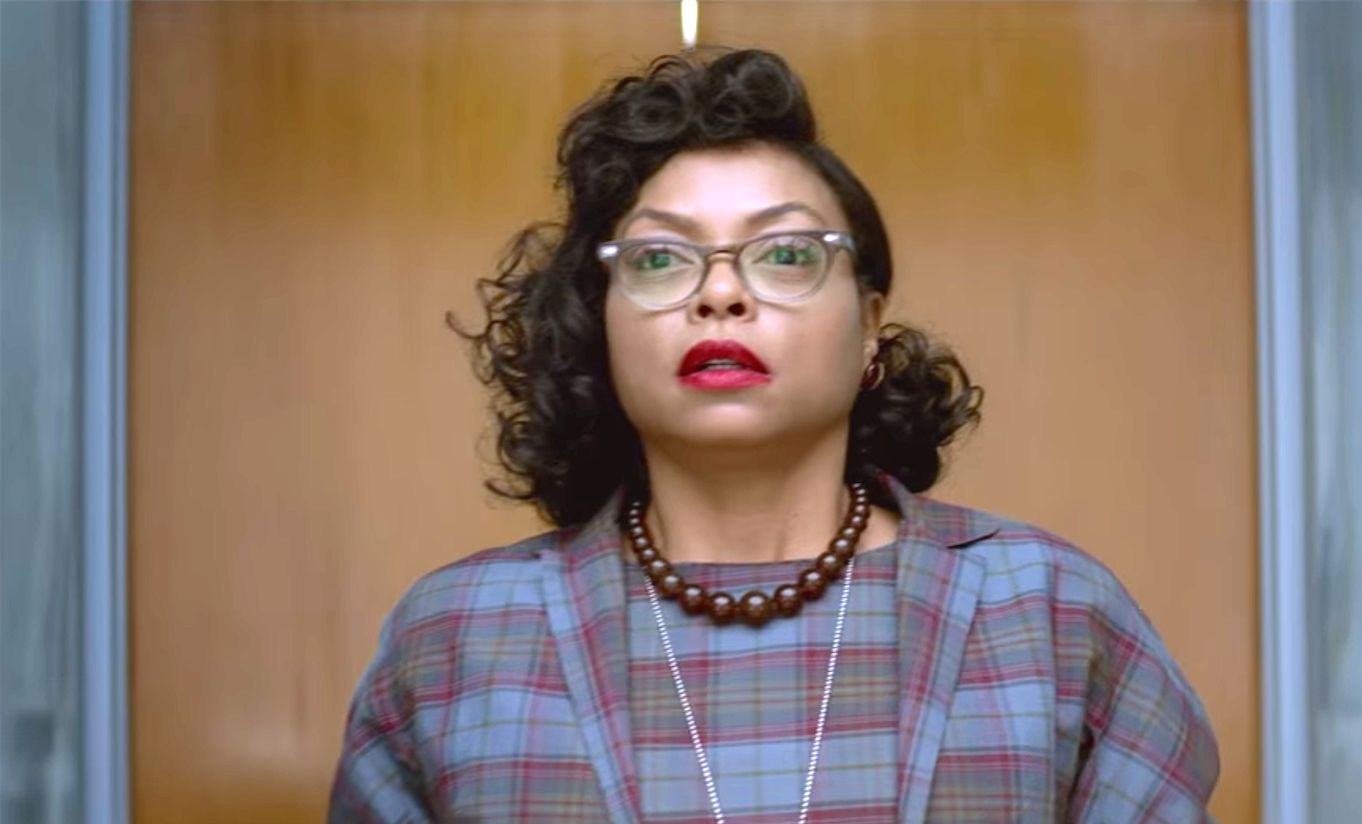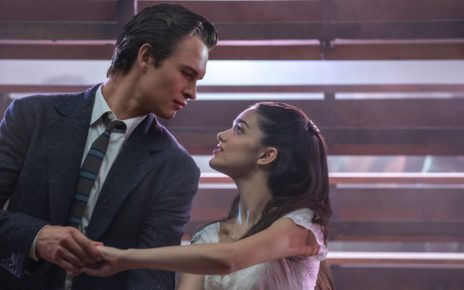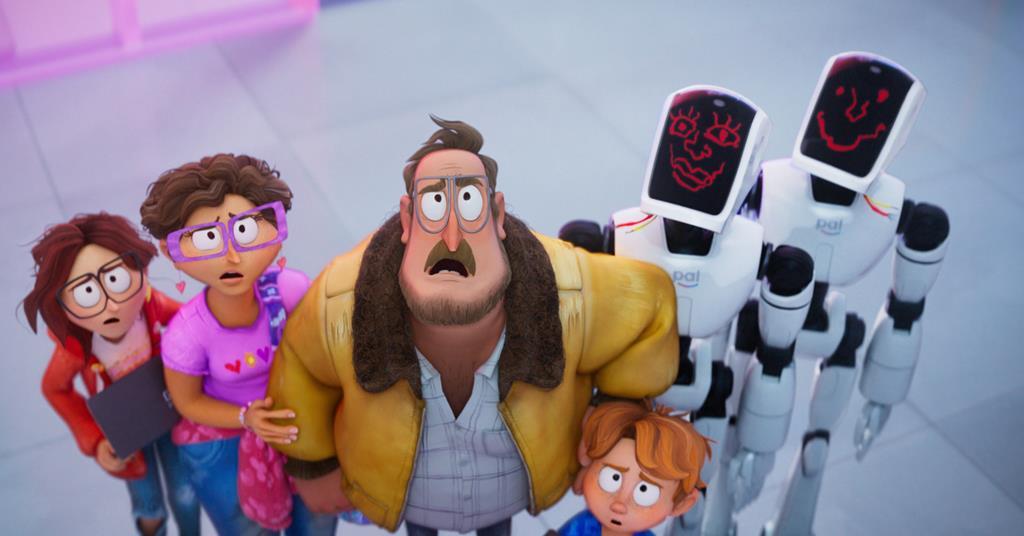With all due respect to Best Picture nominees Hidden Figures and Apollo 13, the gold standard for cinematic NASA remains The Right Stuff. And yet upon reflection of the primarily White Stuff cinematography, I feel a little cheated. Think back yourself on what you remember of The Right Stuff – tanned, smart-ass, athletic white alpha males flanked by Stepford Wives and pasty desk jockeys in short-sleeved button downs, ridiculously dated glasses and military haircuts. Finding the persons of color was like finding Waldo. Turns out they were there, but history’s first few orbits around the issue skipped over that part.
Hidden Figures establishes the nationalistic theme very early on when a traffic cop escorts Katherine Goble (Taraji P. Henson), Dorothy Vaughan (Octavia Spencer), and Mary Jackson (Janelle Monáe) to their place of employment at NASA in Langley, VA. The three black women were saddled with car trouble by the side of the road when the white police officer approached. We’ve seen similar scenes in countless films – the man and the women are from different worlds, have very different understandings of what it means to be American. We fully expect the cop to demonstrate the part where America is “Great Again” by putting the women in jail. But that doesn’t happen – whatever the cop feels, he puts it aside – beating the Russians to space is a national priority. Period. His loyalty to country trumps whatever else he feels. This shouldn’t be poignant, but given the current political climate? Seeing anybody of power put nationalism ahead of bigotry is big deal. It’s amazing to think this was truer in an era of “separate but equal” than it is right now.
Are you gonna argue the point? Russians helped Trump win the election. What part of “America First” does that cover?
I digress. This film is about three black women and their struggles for acceptance within NASA … and NASA’s struggle to succeed without them. Katherine “the computer” is transferred to the theoretical science section of NASA run by Al Harrison (Kevin Costner). She’s there because the punch card IBM computer isn’t ready to roll and she’s the only one on campus who knows analytic geometry acutely. Honestly, would-be supervisor Dorothy and would-be engineer Mary are almost window dressing. The story is about acceptance, but the focus is Katherine. As this is 1961, the pool of black women working for NASA is Hidden, go figure. NASA stuffed them all in a basement in the furthest wing of campus. Katherine, not only a person of color, but also the only woman among Harrison’s legion, has to run in skirt and heels all the way across campus just to use the bathroom marked “for coloreds only.” To make her feel welcome, the men also make sure she has her own separate “colored” coffee pot. Aw, isn’t that sweet? It’s all hers! Naturally, it takes these bozos a bit to figure out what an asset they have in Ms. Goble.
Empowerment movies are always uplifting; they often beg for you not to look behind the curtain because, hey, progress! Seeing Mary win the right to take classes at the local all-white high school in Hampton seems like a huge breakthrough juxtaposed with Loving, in which Virginia’s anti-miscegenation laws were enforced as late as 1958. That’s great, but I still can’t help wanting to know truth from exaggeration, or truth from thin air. I mean, nobody’s going to convince me NASA didn’t have an intercom system of some kind to communicate between buildings on campus. “Hey, lay off, man. It’s not rocket science.” And why was NASA segregated by both sex and race? Where were the black men? Was there a separate building for Hispanic men and women as well? Where was famous Langley “Asian Campus?” And like Loving, the private relationships involving our leads are just a little too easy for me – all three of these women had to spend long hours away from small children; imagining a lack of family issues or constant amity, well, that’s more far-fetched to me than inventing the math needed to escape Earth’s gravity.
Ed Harris is still the gold standard as John Glenn portrayals go. Glen Powell came  off as a tad too glib. I’m sure the real Colonel Glenn used humor to diffuse tension as well; just as I’m sure he had a constant handle on the gravitas of the situation at hand. I would love a verification of the relationship between John Glenn and Katherine Johnson (nee Goble); such a relationship should have been common knowledge for Americans long before now.
off as a tad too glib. I’m sure the real Colonel Glenn used humor to diffuse tension as well; just as I’m sure he had a constant handle on the gravitas of the situation at hand. I would love a verification of the relationship between John Glenn and Katherine Johnson (nee Goble); such a relationship should have been common knowledge for Americans long before now.
Hidden Figures is a terrible title. I know it was meant to be a pun on numerical digits, but when you think of “figures,” especially as with respect to the leads, you might just be thinking about shapely curves instead … say, physical attributes rather than mental acuity – which is exactly contradictory to the main point of the film. Good gravy, folks. Do I have to title these things for you myself? How about “Hidden Assets?” “Hidden Talent?” “The Other NASA?” “Black NASA?” I’ll admit, the last one has a foreboding and irrelevant connotation, but isn’t an irrelevant connotation better than a contradictory one? How about, “We All Got There Together?” Or just plain, “Together?” There’s a communal spirit in the one-word title that exemplifies the theme of the film – and, unlike even Hidden Figures, it has no message behind it of being overlooked, which is also exactly the point of the film. For my money, “Hidden” alone is a better title than Hidden Figures.
♪She checked my arc last night, pre-flight
Zero point nine four six seven
And I hope I’m not way outta site by then
Stereotype so much, it is all white
It’s only us in space
On segregated flight
A I think it’s gonna be a long, long time
Till recognition comes again to find
It wasn’t all Whitey on base at home
Oh, no, no, no, there was a rocket plan
Contributed to from not one race alone♫
Rated PG, 127 Minutes
D: Theodore Melfi
W: Allison Schroeder and Theodore Melfi
Genre: Reexamining history
Type of person most likely to enjoy this film: African American women
Type of person least likely to enjoy this film: Modern bigots; apparently, the ones from the 60s could be dealt with
♪ Parody inspired by “Rocketman”



